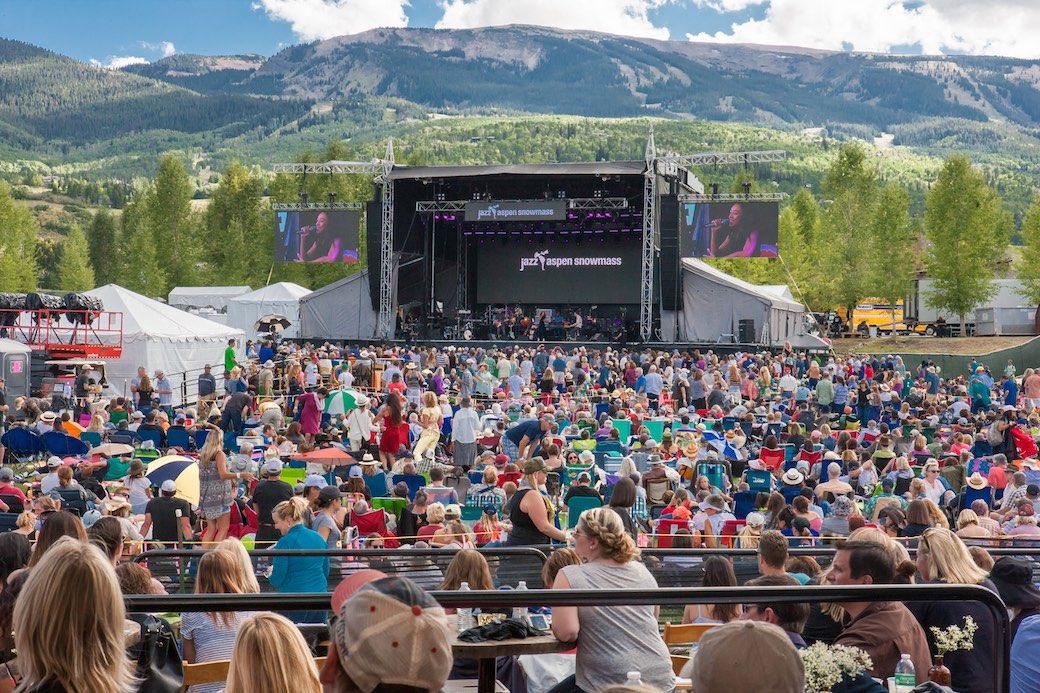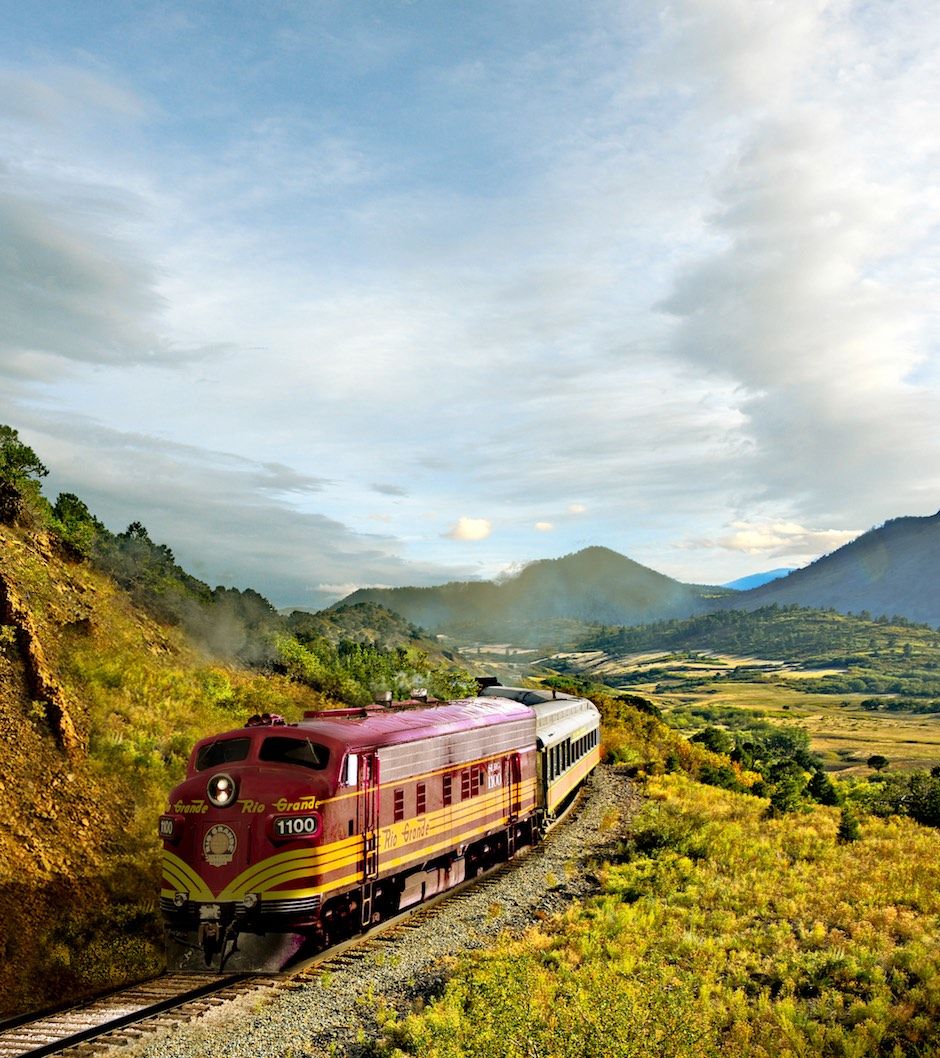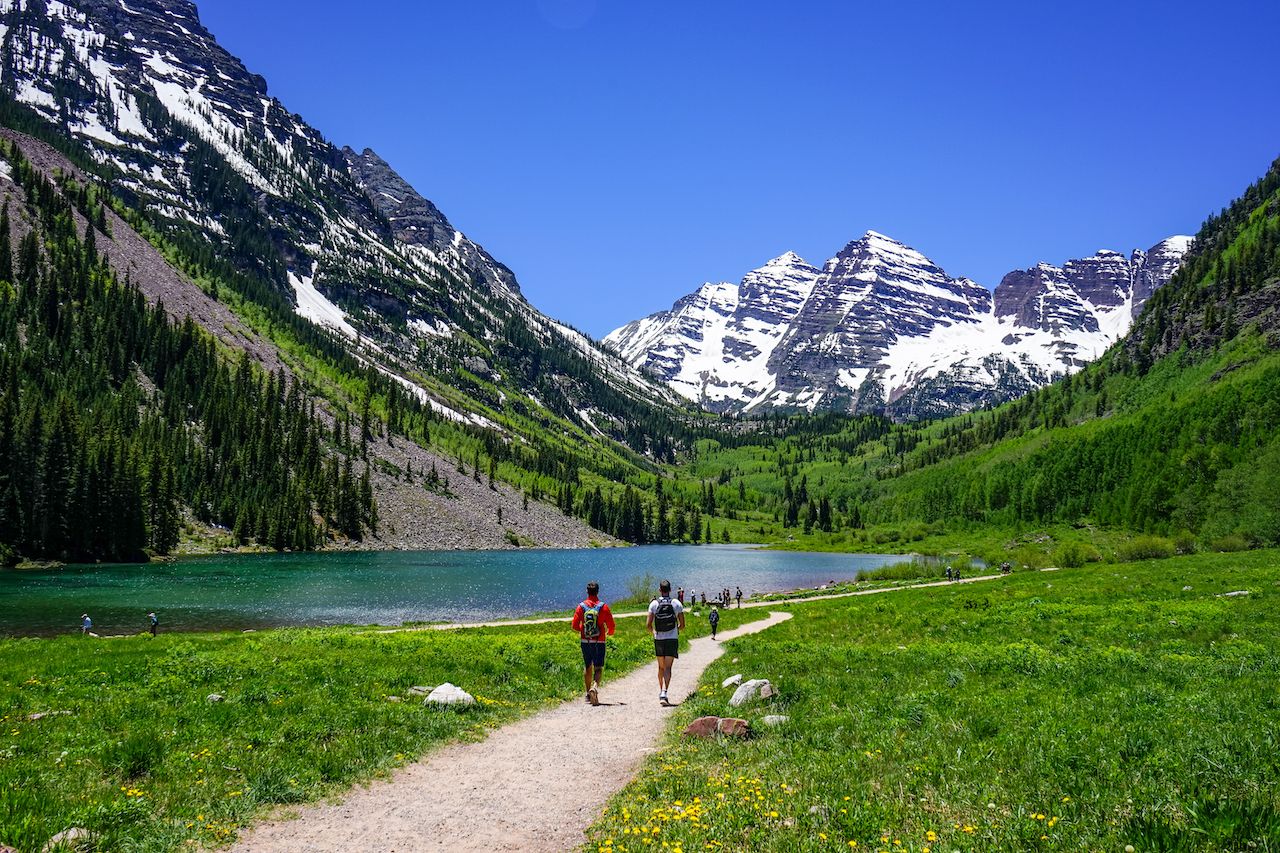THERE’S SO MUCH to see and do in Colorado, and you’re just about always awash in photo-worthy scenes — all those 14,000-foot peaks and wildflowers are famous, and rightly so. But not everything here has been documented, and there are still plenty of unexplored spots waiting. Here are 12 ways the state can still surprise you.
1. The smallest towns throw the biggest parties.

Photo: Steve Mundinger for Jazz Aspen Snowmass
Once the snow melts, festival season goes full-throttle in Colorado. Here’s a look at three wildly different events taking place in our fun-loving, sunshine-filled mountain towns:
- FIBArk, Salida (June 15-18, 2017) – FIBArk is the most bizarre river festival you’ll ever encounter. The “oldest and boldest whitewater festival” hosts multiple races, live music, trail runs, dog contests, local food vendors, and the festival’s coup de grâce — the Hooligan Race. The competition is open to anything that floats…that isn’t a boat. Prepare to see bathtubs, wine barrels, and all sorts of homemade contraptions race through the whitewater park.
- Crested Butte Wildflower Festival (July 7-16, 2017) – The Wildflower Capital of Colorado dedicates a full week to exploring and learning about Crested Butte’s radiant blossoms. Botanists, naturalists, and wildflower enthusiasts lead hikes, 4×4 Jeep tours, workshops, and slideshows all punctuated by delicious local eats and, of course, cocktail hours.
- Jazz Aspen Snowmass (September 1-3, 2017) – Jazz Aspen Snowmass is one of the state’s premier live music events, tucked in the bottom of the Roaring Fork Valley. This year’s festival headliners include Maroon 5, The Roots, Hall & Oates, and Keith Urban. Yeah, it’s a big deal. It takes place in downtown Aspen, meaning all the food and drinks the area is famous for are right at your fingertips.
2. Fruita has the best desert mountain biking in the West.
Colorado’s Western Slope is a land of red rock mesas and stunning copper desert. And where there’s desert, there’s sure to be desert mountain biking. Welcome to long, smooth, fast single track.
Long a “secret/work in progress,” the epic mountain biking found around Fruita is now the best in the West. The Kokopelli Loops, Chutes & Ladders Loop, and everything emanating from 18 Road is slickrock riding at its grandest. And for post-pedal beers and pizza, you can’t beat Fruita’s charming, desert-fringed Aspen Ave.
3. You can bike, ski, and hike in the same day.
Come July, we’ve still got skiable snow. Even if the lifts are no longer turning at traditional late-season ski hills A-Basin and Loveland, you can earn your turns in the backcountry and complete the Colorado triathlon in one day: ski, bike, and hike.
It’s actually not that complicated. One example: Behold Quandary Peak, just outside Breckenridge. Hop on your road bike for the 12-mile ride from downtown to the Quandary Trail (East Ridge) Trailhead. There, lock your bike and strap your skis to your backpack. It’s a 4-mile hike to the summit, where you’ll trade hiking boots for ski boots and descend the south-facing Cristo Couloir to complete your Colorado triathlon.
4. The sandboarding is as good as the snowboarding.
We’ve mentioned the desert landscape in Western Colorado, but there’s also a slice of the Sahara in Southern Colorado: Great Sand Dunes National Park. Sitting at the base of the Sangre de Cristo Mountains, this extensive dune system — with the tallest dunes in North America (some towering 750 feet) — looks oddly out of place beside the snowy peaks. It’s a natural attraction that rarely reaches the radar of most travelers, but Coloradans know it and love it.
You can backcountry camp among the dunes, drive 4-wheelers deep into the sandy ranges, stand in awe of nature’s majesty, and board down the dunes like it’s a powder day. When you’ve had enough sun and sand, cool off with a dip in the Sand Dunes Pool, a naturally hot, artesian-fed pool located just outside park boundaries in Hooper.
5. Rodeos are alive and well, thankyaverymuch.

Photo: Jason Suntych for Greeley Stampede
A summer evening spent at the rodeo is the perfect Colorado memory. Grab a hot dog and a cold one and enjoy. You might be surprised just how much fun you’ll have watching rodeo women and men (not to mention rodeo clowns) barrel race, wrestle steers, rope calves, and, of course, ride those angry bulls.
The Greeley Stampede, taking place over two weeks every summer, is pretty much the best way to celebrate western culture. It attracts the West’s best cowboys as well as some big-name musicians — Toby Keith and Barenaked Ladies are scheduled to perform in 2017. For a more intimate rodeo experience, Steamboat Springs hosts Colorado’s finest weekly series. Every Friday and Saturday night from mid-June to mid-August, Steamboat’s grounds swell with cowboys and cowgirls ready to show off their stuff.
6. Scenic trains are very much a thing here, and they’re awesome.

Photo: Rio Grande Scenic Railroad
Colorado’s antique railways are decidedly not a thing of the past. Many of these routes were first pioneered by mining companies, and they therefore ply some of the world’s most spectacular alpine terrain. Colorado operates about eight scenic trains, depending on the season, but these three are definite highlights:
- Leadville Southern Railroad – After gaining 1,000 feet of elevation, the Leadville, Co & Southern Railroad is surrounded by alpine views of the commanding Mt. Elbert and Mt. Massive, Colorado’s tallest mountains. It’s a casual affair where you can meet the engineer, check out the locomotive, and enjoy a BYO picnic lunch.
- Cumbres & Toltec Scenic Railroad – The granddaddy of them all, the Cumbres & Toltec is America’s longest and highest — and arguably most scenic — narrow-gauge steam railroad. It chugs over 10,015-foot Cumbres Pass and winds through Toltec Gorge.
- Rio Grande Scenic Railroad – Like Colorado’s other scenic trains, the Rio Grande labors up steep mountain passes alongside wildlife and abundant natural beauty. But what really sets it apart is the Mountain Rails Live series, where they deposit riders at a private, mountaintop concert venue, reachable only by train. And no, this one isn’t put on by Ja Rule.
7. You’ll be glad you tried the wine.
In addition to birthing the modern craft-beer renaissance (you’re welcome), Colorado is home to two officially designated American Viticultural Areas — West Elks and Grand Valley. Our winemaking heritage dates all the way back to the 1800s when miners first planted European vines in Southern Colorado.
True, Prohibition battered Colorado’s wine industry, but it’s coming back. With hot days and cool nights, Colorado’s 100+ wine producers enjoy ideal growing conditions for Merlot, Cabernet Sauvignon, Syrah, Cabernet Franc, Chardonnay, Riesling, and Viognier. To sample the gamut, hit the Western Slope in Northwestern Colorado, near Grand Junction. It’s home to a series of wine trails along the Colorado River, with a dry climate and just the right elevation for a wide variety of vinos.
8. There are trails for everybody.
Mountain bikers, hikers, dirt bikers, horseback riders, Jeepers — we’ve got trails just for you. And sometimes only for you. Colorado’s public lands do an admirable job balancing trail users, often setting aside trail systems just for certain activities — motorized or not. From quiet wilderness trails where you’ll only encounter hikers and horses, to serene single track tucked deep in the forest, to big, sandy dirt bike tracks, Colorado has the sandbox for you and your toys.
And when it comes to cycling, you don’t have to stick to the wilderness. One of the best ways to get to know our buzzing cities is on a bike tour. Mile High Bike Tours can guide you to the best sites in downtown Denver, while Boulder Bike Tours will take you on a wicked trip through what’s been called “25 idyllic square miles surrounded by reality.”
9. You can explore the ruins of a lost civilization.

Photo: Kris Wiktor/Shutterstock
Colorado’s flush with NPS properties, but few experiences can match the one found in Southwestern Colorado’s Mesa Verde National Park. There’s great hiking here as well as some mountain biking, but the real draw is the long-abandoned cliff dwellings, once inhabited by the Ancestral Puebloan people.
Mesa Verde’s dwellings are the most extensive and best preserved in the Southwest, particularly the humongous Cliff Palace. Some 1,400 years ago, the previously nomadic Puebloans began constructing these elaborate mini-towns tucked precariously along cliff faces. By about 1300 AD, they were gone. Why they started these settlements and why they suddenly abandoned them remains a mystery, though social instability brought on by prolonged drought remains the best guess. See them and theorize for yourself.
10. Our rivers will forever change the way you look at rivers.
Kayaking, stand-up paddleboarding, rafting, fly fishing — no matter how you enjoy Colorado’s wild rivers and streams, you’ll never look at another river the same way again. A day on the water is more than a relaxing way to get a great tan. You’ll learn how to read the river, find the fish, and get everyone downriver safely. After just one day, you’ll find yourself looking for eddy lines, strainers, bends, currents, and the unmistakable surface kiss of a trout rising.
11. A road trip here will leave you breathless…literally.
Colorado has some of the world’s best driving routes, be they on the open plains with mountain views towering on the horizon…or actually among said mountains. A road trip here can mean navigating routes well above 9,000 feet for unforgettable views, endless fields of wildflowers, and a little less air pressure than you might be used to.
But you don’t need to be Evil Knievel to successfully navigate a white-knuckle drive in the Colorado Rockies. Much of Colorado’s iconic driving — like Independence and Loveland Passes — is paved and open to many types of vehicles. The only challenge will be choosing your route. Colorado has 26 national scenic byways — more than any other state.
12. You’ll learn firsthand the origin of our state’s name.

Photo: Tassanee Riebpadith/Shutterstock
Mother Nature is known to put on a show here that would make Crayola jealous. Emerald hills after a spring rain, azure alpine lakes, sunsets bursting with reds and purples, the bouncing orange hues of alpenglow, alabaster white mountain peaks… If I keep going, I’ll run out of apt adjectives. You may have arrived not realizing the origin of our state’s name, but you’ll definitely leave knowing exactly what puts the “color” in Colorado.

